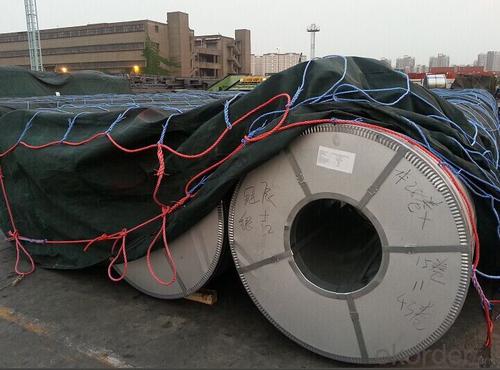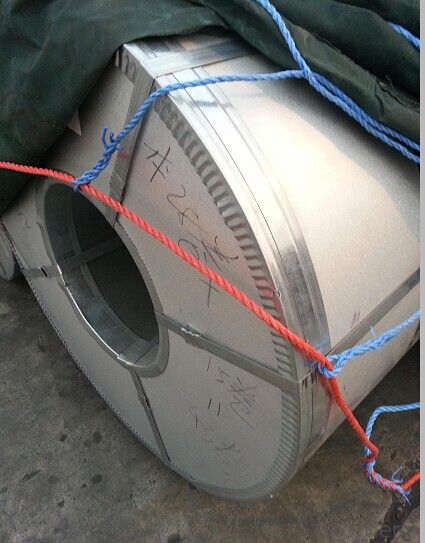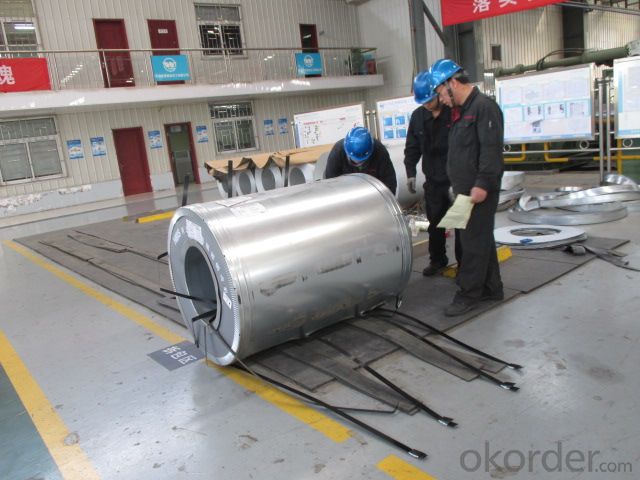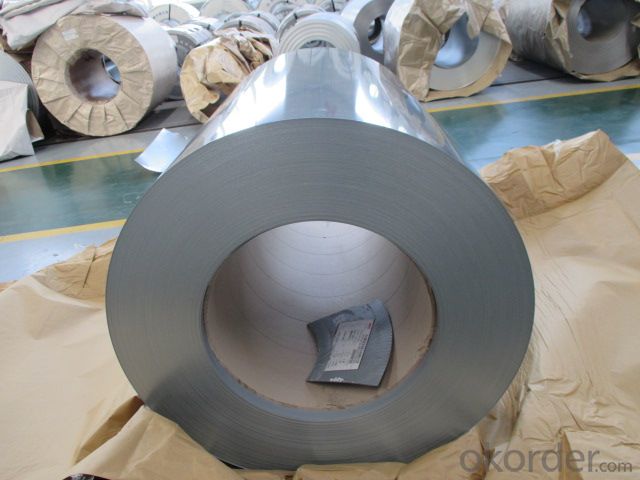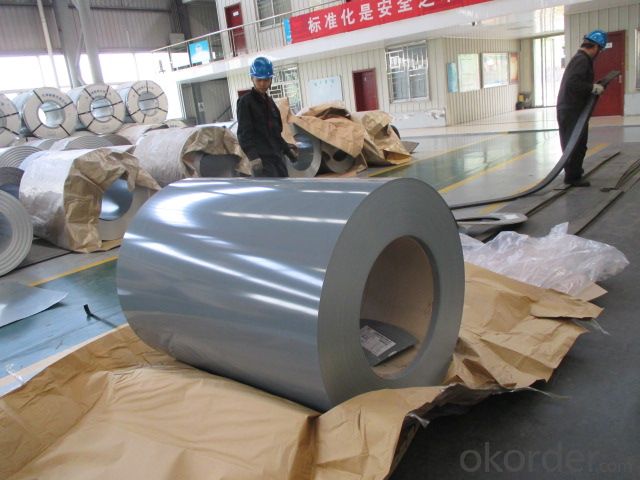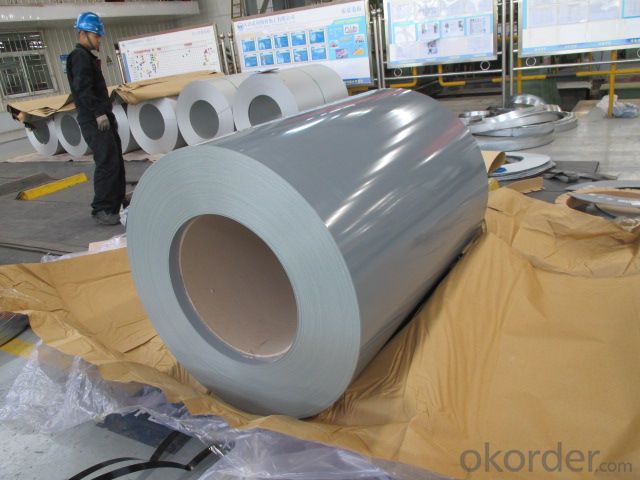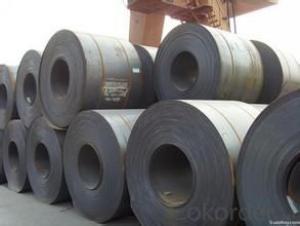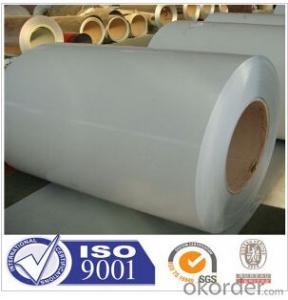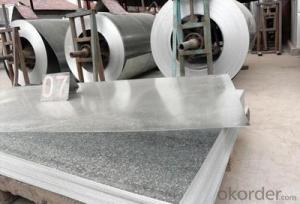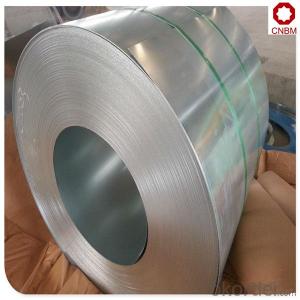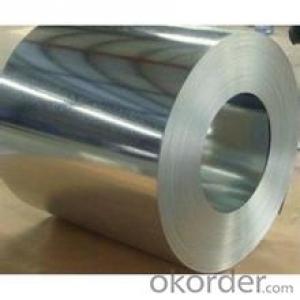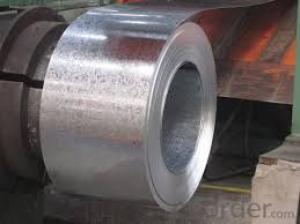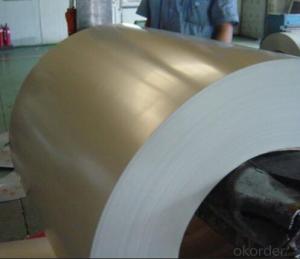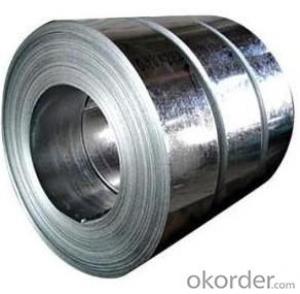SGCC 1.0*1219mm Hot Dip Galvanized Steel Coil
- Loading Port:
- Shanghai
- Payment Terms:
- TT OR LC
- Min Order Qty:
- 10 m.t.
- Supply Capability:
- 100000 m.t./month
OKorder Service Pledge
OKorder Financial Service
You Might Also Like
Product | SGCC JIS3302 galvanized steel coil big/minimized/regular spangles galvanized steel coil/gi steel coils in big stock |
Thickness | 0.13mm-3mm |
Width | 914mm-1250mm |
Tolerance | Thickness:±0.02mm Width:-0/+5mm |
Coil weight | 3.5-5Tons |
Standard | JIS G3302, JIS G3313,ASTM A526, ASTM A 446,DIN EN 10142, DIN EN 1012 DIN1716,GB/T2518-2004 etc. |
Steel grades | SPCC,SGCC,DX51D+Z, DX52D+Z, SECC, SGCH,ST02Z etc. |
Technique | Cold rolled/hot dipped |
Surface finished | Galvanized |
Surface treatment | Big/normal/minimized/zero spangle ,skin pass etc. Chromated/oiled/lacquered/ phosphated/coating etc. |
Zinc-coating | 30g/m2-275g/m2 |
Coil I.D | 508mm-610mm |
Remarks | 1)Trade terms:FOB/CFR/CIF 2)Payment terms:T/T, L/C,Western Union 3)Delivery time:10-15 days after received deposit 4)MOQ:10Tons for stock |
Packing | Standard export package or as clients’ requests |
- Q: What are the common quality control measures for steel coils?
- To ensure the performance and reliability of steel coils, several common quality control measures are implemented. These measures play a crucial role in upholding the overall quality of the coils and ensuring their compliance with the necessary standards and specifications. To begin with, dimensional checks are conducted to verify that the steel coils possess the correct thickness, width, and length. Deviations from the specified dimensions can significantly impact the coils' functionality and usability, making this check of utmost importance. Following that, visual inspections are carried out to identify any surface defects or imperfections such as scratches, dents, or corrosion. These inspections aid in identifying potential issues that could compromise the structural integrity of the coils or affect their aesthetic appearance. Moreover, mechanical property tests are performed to assess the strength, hardness, and other mechanical characteristics of the steel coils. These tests provide valuable insights into the coils' performance and durability under different conditions and loads. An essential quality control measure for steel coils is the analysis of their chemical composition. This involves scrutinizing the steel's composition, including the presence of any impurities or elements that may impact its properties. It ensures that the coils are made from the correct grade of steel and meet the required chemical specifications. Coating inspections also play a vital role in quality control. When steel coils are coated with protective layers, it is imperative to examine the adhesion, thickness, and uniformity of these coatings. This examination ensures that the coils have sufficient protection against corrosion and other environmental factors. Lastly, various non-destructive testing methods, such as ultrasonic testing, magnetic particle inspection, or eddy current testing, are employed to detect any internal defects or abnormalities in the steel coils. These tests enable the identification of issues like cracks, inclusions, or discontinuities that may not be visible through visual inspection alone. In conclusion, the quality control measures for steel coils consist of dimensional checks, visual inspections, mechanical property tests, chemical composition analysis, coating inspections, and non-destructive testing. These measures are vital in maintaining the quality and reliability of steel coils, guaranteeing their compliance with the required standards, and meeting customer expectations.
- Q: How are steel coils protected against scratches and damage?
- Steel coils are protected against scratches and damage through a variety of methods. One common method is the application of a protective coating or film on the surface of the coils. This coating acts as a barrier, preventing direct contact between the steel surface and any potential sources of scratches or damage. The protective coating can be made of materials like polyethylene, PVC, or other types of plastic that are resistant to abrasion and impact. Additionally, steel coils are often wrapped or packaged using materials such as paper, cardboard, or plastic. This wrapping provides an extra layer of protection against scratches and damage during storage, transportation, and handling. The wrapping material acts as a cushion, absorbing any potential impacts or friction that could lead to scratches. Furthermore, steel coils may be stored and transported in specially designed containers or pallets that are equipped with features to minimize the risk of damage. For instance, these containers or pallets may have padded interiors, secure fastenings, or dividers that keep the coils in place and prevent them from rubbing against each other. In some cases, steel coils are also stored or transported in a controlled environment to minimize the risk of damage. This can include temperature-controlled warehouses or shipping containers that help to prevent the formation of moisture, which can lead to corrosion or other types of damage. Overall, a combination of protective coatings, wrapping materials, specialized containers, and controlled environments is employed to ensure that steel coils are adequately protected against scratches and damage throughout their lifecycle.
- Q: How does coil slitting work?
- Coil slitting is a process used in manufacturing industries to cut large coils of material, such as metal, into narrower strips of desired widths. The coil is unwound and passed through a set of circular blades that make precise cuts along the length of the coil. The blades can be adjusted to the desired width, and the process continues until the entire coil is slit into multiple smaller coils or strips.
- Q: What are the different methods of testing steel coils for quality control?
- There are several methods commonly used to test steel coils for quality control. These methods ensure that the steel coils meet the required specifications and standards. 1. Visual Inspection: This is the most basic method of testing steel coils. It involves a thorough visual examination of the coils for any surface defects such as scratches, dents, or irregularities. Visual inspection helps identify any visible defects in the material. 2. Dimensional Measurement: Another important method is dimensional measurement. This involves using various tools like calipers, micrometers, or laser measuring devices to assess the dimensions of the steel coils. The measurements are compared against the specified tolerances to ensure they meet the required standards. 3. Hardness Testing: Hardness testing determines the resistance of the steel coils to indentation or penetration. It helps assess the strength and durability of the material. Common hardness testing methods include Rockwell, Brinell, and Vickers hardness tests. 4. Tensile Strength Testing: Tensile strength testing measures the maximum amount of tensile stress a steel coil can withstand before breaking or deforming. This test helps determine the strength and elasticity of the material and ensures it meets the required specifications. 5. Chemical Analysis: Chemical analysis involves testing the composition of the steel coils to verify if they contain the desired amount of specific elements. This is crucial for ensuring the coils are made from the correct grade of steel and comply with the required chemical composition standards. 6. Coating Thickness Measurement: In case the steel coils have a protective coating, it is important to measure the thickness of the coating. This is typically done using non-destructive testing methods like magnetic induction or eddy current testing. The coating thickness is compared against the specified requirements to ensure it provides adequate protection. 7. Surface Roughness Measurement: Surface roughness testing assesses the smoothness or roughness of the steel coil's surface. This is done using instruments like profilometers or roughness testers. Surface roughness testing helps ensure the coils meet the required surface finish standards. 8. Ultrasonic Testing: Ultrasonic testing utilizes high-frequency sound waves to detect internal defects such as cracks, voids, or inclusions within the steel coils. It is a non-destructive testing method that provides valuable information about the coil's structural integrity. 9. Magnetic Particle Inspection: This method is used to identify surface and near-surface defects in steel coils. Magnetic particles are applied to the surface, and any magnetic leakage caused by defects is detected using magnetic sensors. This technique is particularly effective for detecting cracks and other surface abnormalities. By employing a combination of these testing methods, manufacturers can ensure that the steel coils produced meet the required quality standards and are suitable for their intended applications.
- Q: pros and cons of stainless steel and carbon steel swords
- Carbon is what samurais added to their swords to make them super strong. The iron ore was cooked in coal for days; the coal adds the carbon. Too much carbon or too little carbon is a bad thing so it was a very important process. I'd have to go with a sword with carbon.
- Q: I made a wood crossbow body but all I need is a bow which I want to be metal. I've used a thin steel sheet that I cut to appropriate size but when it bent with the string strung, it never went to original shape after being shot. I used a slightly thicker and it wouldn't bend at all. Anybody know what thickness and type to use? Any real answers are very appreciated. Thanks.
- You are trying to use plain carbon steel which only can be bent a little bit if it is to return to its original shape. You have to use spring steel or high carbon steel that is intended to be bent a lot and still recover to its original shape. Most people making crossbows with metal bows get a piece of steel from a leaf spring of a vehicle and grind it to shape. A steel bow cross bow almost always needs a very strong trigger mechanism and a miniature wench to pull the steel bow string into position. You might be better off making the bow of wood.
- Q: How are steel coils used in the production of metal storage systems?
- Steel coils are used in the production of metal storage systems as they can be cut and shaped into various components, such as beams, frames, and shelves. These coils provide the necessary strength and durability required for constructing robust and reliable storage systems.
- Q: What are the different types of steel coatings for coil protection?
- There are several different types of steel coatings for coil protection, including galvanized coatings, zinc-nickel coatings, organic coatings, and metallic coatings. Galvanized coatings involve applying a layer of zinc to the steel surface to protect it from corrosion. Zinc-nickel coatings offer enhanced corrosion resistance and improved adhesion properties compared to traditional galvanized coatings. Organic coatings, such as paint or polymer coatings, provide a protective barrier against corrosion and can also offer aesthetic benefits. Metallic coatings involve applying a thin layer of a different metal, such as aluminum or tin, to the steel surface to provide corrosion resistance.
- Q: What are the challenges in welding steel coils?
- There are several challenges in welding steel coils that need to be addressed in order to ensure successful and high-quality welds. One of the main challenges is achieving proper joint preparation. Steel coils often have different surface conditions, such as rust, scale, or oil, which need to be cleaned or removed before welding. This requires extensive cleaning and preparation to ensure a clean and sound welding surface. Another challenge is the control of heat input. Steel coils are typically thin, and excessive heat can cause distortion, warping, or even burn-through. Welding operators need to carefully control the heat input to prevent these issues and maintain the integrity of the coils. Moreover, the presence of residual stresses is a significant challenge. Steel coils are often subjected to various stresses during manufacturing, transportation, and handling, which can lead to distortion or cracking during welding. Adequate preheating and post-weld heat treatment may be necessary to relieve these stresses and prevent any potential defects. Ensuring proper weld penetration is also crucial. Steel coils may have varying thicknesses, and achieving consistent and adequate weld penetration throughout the joint can be challenging. Welding operators need to choose the appropriate welding parameters and techniques to ensure complete fusion and a strong bond. Lastly, the size and weight of steel coils can pose logistical challenges during welding. Handling large and heavy coils requires specialized equipment and proper positioning to ensure safe and efficient welding. Additionally, the length of the coils may require multiple passes or continuous welding, which demands skilled operators and precise coordination. Overall, welding steel coils requires careful attention to joint preparation, heat control, stress relief, weld penetration, and logistical considerations. Overcoming these challenges ensures the production of high-quality and durable welded steel coils.
- Q: My mother is in a weilding class, and today she accidentally welded Galvanized Steel. She doesn't feel good and she wants to know what the symptoms are for Galvanized Poisoning from breathing in the Fumes. Please help, I am worried for her.
- i have a dog with a galvanized chain on her neck ''for looks'' can she get even the slightest harmful effect from it being on her 24/7?
Send your message to us
SGCC 1.0*1219mm Hot Dip Galvanized Steel Coil
- Loading Port:
- Shanghai
- Payment Terms:
- TT OR LC
- Min Order Qty:
- 10 m.t.
- Supply Capability:
- 100000 m.t./month
OKorder Service Pledge
OKorder Financial Service
Similar products
Hot products
Hot Searches
Related keywords






